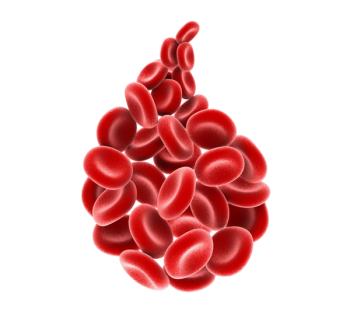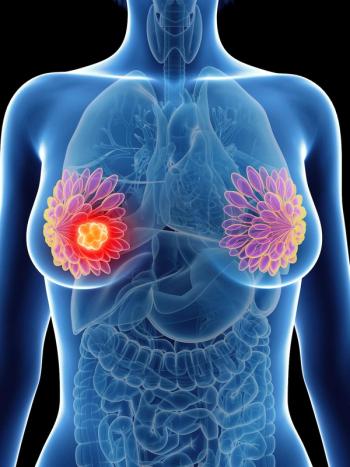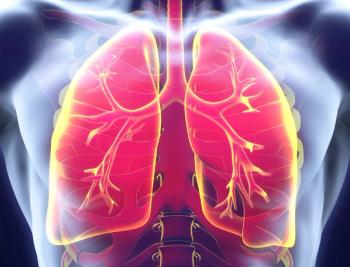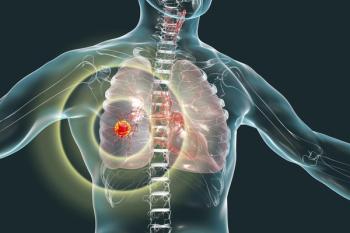
Study Confirms Heightened Hospitalizations, Mortality With COVID-19 in Patients With Malignant Pleural Mesothelioma
In the early days of the COVID-19 pandemic, patients with malignant pleural mesothelioma were more likely to be hospitalized or die from COVID-19 versus the overall population.
High hospitalization and mortality rates were noted in patients with malignant pleural mesothelioma and COVID-19 infections, with 20% of patients treated at the Vall d’Hebron University Hospital being diagnosed with the virus during the first year of the pandemic, according to a study that was presented at the 2021 World Conference on Lung Cancer.
The results showed that 7 patients (18%) were diagnosed with COVID-19 by a reverse transcription polymerase chain reaction test; the median overall survival (OS) of these patients was 17.8 months from cancer diagnosis.
Five of these patients died; reasons for death included COVID-19 (n = 4) and progressive disease (n = 1). The median OS of these patients was 0.4 months since COVID-19 diagnosis.
Patients with thoracic malignancies may be particularly vulnerable to COVID-19, lead study author Susana Cedres, MD, PhD, a medical oncologist in the Thoracic Tumors Unit at the Vall d’Hebron University Hospital and Institute of Oncology in Barcelona, Spain, said in explaining the basis for the study in a virtual presentation of the data.
Although the effect of SARS-CoV-2 infection has previously been evaluated in 200 patients with thoracic malignancies in the TERAVOLT registry, only 8 patients with malignant pleural mesothelioma were included in the assessment.
In the United States, tuberculosis, drug use disorder, hepatitis, HIV/AIDS, cardiomyopathy, diabetes, and malignant pleural mesothelioma has been associated with worse COVID-19 related mortality outcomes.
Therefore, investigators sought to tease out the effect of COVID-19 infection on patients with malignant pleural mesothelioma at Vall d’Hebron University Hospital.
In the study, investigators compiled the medical records of 38 patients with malignant pleural mesothelioma who had visited Vall d’Hebron University Hospital between March 2020 and March 2021.
The data that was collected included information on demographics, comorbidities, oncological background, and course of COVID-19 illness.
Regarding the patient characteristics of those diagnosed with COVID-19, the median age was 62 years (range, 62-87). The study population comprised 4 men (57%) and 4 women (43%). Four patients were non-smokers (57%), and 3 patients were current or former smokers (43%).
All 7 patients (100%) had epithelioid histology. Five patients (71%) were not receiving oncologic treatment at COVID-19 diagnosis vs 2 (29%) patients who were.
Additionally, investigators stratified patients by 6 characteristics at COVID-19 diagnosis: comorbidity, concomitant treatment, clinical onset, laboratory, hospitalization, and respiratory symptoms.
In the patients that had comorbidities, 4 patients (57%) had a cardiovascular comorbidity, 1 patient (14%) had a respiratory comorbidity, and 1 patient (14%) had a renal comorbidity.
Those patients with concomitant treatments, 4 patients (57%) were receiving antiplatelet or anticoagulant therapy, 2 patients (29%) were receiving antidiabetic therapy, and 1 patient (14%) was receiving corticosteroids.
Patients who had clinical onset, 4 patients (57%) had symptomatic onset, and 3 patients (43%) had asymptomatic onset.
In addition, the laboratory results showed, 6 patients (85%) had lymphopenia, 4 patients (57%) had high d-dimer, and 4 patients (57%) had high IL-6.
Regarding hospitalization, 6 patients (85%) were hospitalized, and 1 patient (14%) was not.
Finally, patients with respiratory symptoms, 4 patients (57%) had bilateral pneumonia, and 6 patients (85%) had oxygen support.
Reference
Cedres S, Assaf JD, Iranzo P, et al. Clinical characteristics and outcomes in patients with malignant pleural mesothelioma (MPM) with COVID-19 infection. Presented at: 2021 World Conference on Lung Cancer; September 8-14, 2021. Virtual. Abstract
Newsletter
Stay up to date on recent advances in the multidisciplinary approach to cancer.


















































































